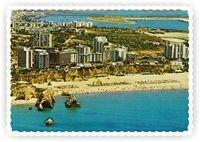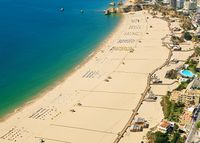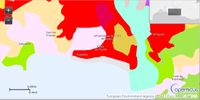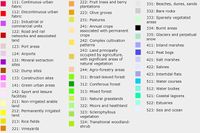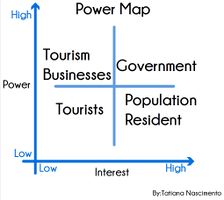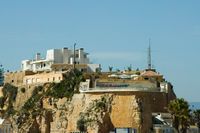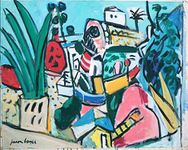Algarve: Difference between revisions
| Line 129: | Line 129: | ||
* ''Praia da Rocha (Portugal): an anthropization paradigm of the Algarve coast, J. A. Dias, IELT – Instituto de Estudos de Literatura Tradicional, Faculdade de Ciências Sociais e Humanas, Universidade Nova de Lisboa, 1069-061 Lisboa, Portugal.,CIMA – Centro de Investigação Marinha e Ambiental, Universidade do Algarve, Edifício 7, Campus de Gambelas, 8005-139 Faro, Portugal.'' | * ''Praia da Rocha (Portugal): an anthropization paradigm of the Algarve coast, J. A. Dias, IELT – Instituto de Estudos de Literatura Tradicional, Faculdade de Ciências Sociais e Humanas, Universidade Nova de Lisboa, 1069-061 Lisboa, Portugal.,CIMA – Centro de Investigação Marinha e Ambiental, Universidade do Algarve, Edifício 7, Campus de Gambelas, 8005-139 Faro, Portugal.'' | ||
* ''http://www.portugalnummapa.com/praia-da-rocha/ '' | * ''http://www.portugalnummapa.com/praia-da-rocha/ '' | ||
*''https://holidaysportugal.eu/algarve/en/heritage-portimao/'' | |||
= Phase B: Landscape Evaluation and Assessment = | = Phase B: Landscape Evaluation and Assessment = | ||
Revision as of 09:51, 22 April 2018
>>>back to working groups overview
| Area | Praia da Rocha | |
| Place | Portimão | |
| Country | Portugal | |
| Topics | Coastal Management | Risk | Tourism | |
| Author(s) | Tatiana Nascimento | |

| ||
Rationale
The tourism boom that happened during the last century in the south coastal area in Portugal, in this case of study the Praia da Rocha "Stone's Beach" in English, obligates to an artificial increasing of the coastal sand terrain. According to the theme of coastal landscapes, it's important on this case of study: To understand how the coastal zone of Praia da Rocha is managed, which has evolved exponentially since the last century; The risk that may be implicit in depending on this management as to the singularity of the place.
Location and scope
A Landscape System Analysis
A.1 Landscape layers and their system context
Geomorphology, landscape units and coastal typology
- Beach supplied by sedimentary exchange with the submerged delta bank of the Arade River
- Beach Artificial Nourishment
- Coastal Zone - Beach composed by landforms as rock cliffs, caves, arches, and stacks
Land use
- Ends of XIX century this coastal zone was a small village with agriculture as main activity, some small business commerce and recreation, where the Casino had a big amount of profits. Then a big investment has made this zone developed with a tourism related vision. So the small village turned a urban centre with lots of tourists at the Summer season. The upgrade in the commerce and recreation, makes the tourism boom in this region that developed without management.
Green/blue infrastructure
- Elements:
Praia da Rocha is the strip of sand that has tendency to disappear because of the coastal erosion.
The agriculture fields on the green infrastructure have tendency to disappear to be converted in tourism resorts or building areas.
Actors and stakeholders
- The coast is mainly owned by tourism companies and is ruled by a speacial law: the Coastline Planning Plan Brunau-Vilamoura (POOC Brunau-Vilamoura). Residents are the most affected by any changes in the management of this place and tourists are affected but they still have some power by their choices to make changes on the development of the coast.
Sacred spaces and heritage
Visual appearance and landscape narrative
- Special elements: rocks, sand and sea
- The Legend of Praia da Rocha
There was a mermaid that, it is not well known how it ended up on the great rocks of a sandy tongue on the Algarve coast. There she rested for a long trip to enjoy the beautiful landscape from the top of each rock road. Until one day she heard someone coming, and waking up she saw an old man claiming to be a son of the sea. He said that all that water, from there to the edge of the horizon and even to the oceanic realms beyond what the eye could see was his. And so in love was the mermaid that if she accepted marriage, he would share this aquatic kingdom with her. Forever. The mermaid was preparing to respond, but at that moment another old man came, coming from the continental side. He said that he was the son of the Hills, and that the territories that remained north of the cliff, and that went up to the hills were his property. That if he left the son of the Sea and accepted him instead, all the flowers and shrubs and trees and hills and valleys could be gardens of his own. The Mermaid did not know what to do and let them both compete for their love. And so it was. For centuries: the Sea seduced with its rippling and the movement of each tide, the mountain with its fruits and flowers. And it all lasted a long time. so much so that the mermaid was turned into fine sand and the two suitors maintained their game of forces and truces. Now pushing himself or herself by helping each other forming what we know today by Praia da Rocha. It is interesting to note as the legend, although it isn't just that, it hides a scientific side - the fact that a beach is built by erosion caused between land and sea (and wind, already). In this case decorated it with a third party, the mermaid, a reference of national folklore, especially in the Portuguese coast. Is that, curiously, is also a symbiosis of these same elements (the half woman representing the land and the half fish representing the ocean). From www.portugalnummapa.com/praia-da-rocha adapted
A.2 Summary of you landscape system analysis and your development Targets
- You can summarize your findings with an DPSI(R) Model or a Spider Diagram
- Link back to the Sustainable Development Goals: Which goals are at risk?
- What is your hypothesis for this landscape?
- Visualise your hypothesis with one graphic/pict
- Are there any existing initiatives taking action in this landscape? Do you have a critical perspective on that?
- Add text and visuals
- Your case your spider diagram or dpsir model.jpg
explain your analysis briefly in the caption
- Your case your hypothesis visual.jpg
explain your hypthesis briefly in the caption
A.3 Theory reflection
- Reflect on at least three international policy documents in relation to their local landscape case
- choose one international, one European and one national document
- You can choose references from our reading list
- Scope: 250 words
A.4 References
- Praia da Rocha (Portugal): an anthropization paradigm of the Algarve coast, J. A. Dias, IELT – Instituto de Estudos de Literatura Tradicional, Faculdade de Ciências Sociais e Humanas, Universidade Nova de Lisboa, 1069-061 Lisboa, Portugal.,CIMA – Centro de Investigação Marinha e Ambiental, Universidade do Algarve, Edifício 7, Campus de Gambelas, 8005-139 Faro, Portugal.
- http://www.portugalnummapa.com/praia-da-rocha/
- https://holidaysportugal.eu/algarve/en/heritage-portimao/
Phase B: Landscape Evaluation and Assessment
B.1 Assessment Strategy
- Based on the hypothesis derived from your previous landscape systems analysis you are now asked to define the goals for assessing the landscape. Your assessment is the basis for evaluating the landscape status.
- Which elements and phenomena need to be mapped, why and how?
- This a text contribution, max 250 words
B.2 Mapping
- As defined by your assessment strategy you conduct the mapping and present your findings here
- As a minimum, at least three different themes need to be mapped, you may choose more if needed
- Your case your assessment mapping themel.jpg
briefly explain the findings of your mapping
- Your case your assessment mapping theme2.jpg
briefly explain the findings of your mapping
- Your case your assessment mapping theme3.jpg
briefly explain the findings of your mapping
B.3 Problem definition and priority setting
- Give a summary of the major findings of your mapping process, what are the problems/potentials identified?
- Draw a problems/potentials map
- Set priorities for the most relevant issues
- Your case problems potentials map.jpg
add caption here
B.4 Theory reflection
- Please reflect the assessment and evaluation methods used based on at least three readings
- Did you encounter limitations'
- 200 words test contribution
B.5 References
- give a full list of the references you have used for this section
Phase C – Strategy and Master Plan
C.1 Goal Setting
- Define strategic planning objectives based on the evaluation findings
- Link back to your original targets from section one and the Development Goals
- 150 words text contribution
C.2 Spatial Strategy and Transect
- translate your strategic goals into a vision
- develop a spatial translation of your vision
- exemplify your vision in the form of a transect with concrete interventions
- add map(s) and visualizations
- Your case spatial translaton vision.jpg
add caption here
- Your case transect.jpg
add caption here
- Your case transect detail1.jpg
add caption here
- Your case transect detail2.jpg
add caption here
C.3 From Theory of Change to Implementation
- For implementing your vision: Which partnerships are needed? Which governance model is required?
- Who needs to act and how? Draw and explain a change/process model/timeline
- Which resources are needed? On which assets can you build?
- add 150 words text and visuals
- Your case spatial your governance model.jpg
add caption here
- Your case spatial your process model.jpg
add caption here
C.4 References
D. Process Reflection
- Reflect in your intercultural and interdisciplinary team on the outcomes of your study
- Which limitations were you facing?
- What have you learnt from each other?
- What would you do differently next time?
- You can also use diagrams/visuals
- 250 words text
